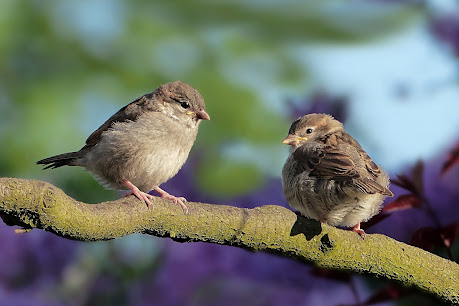Types of Sparrows
Sparrows aren't the flashiest birds out there, but they're a reasonably large category. There are many sorts of sparrows and most have similar sizes, colors, and feather patterns that make them hard to inform apart and leave bird watchers reaching for his or her guidebooks.Actually they're often called little brown birds. during this article we'll take a glance at 17 of the foremost common species of sparrows in North America.
WHAT IS A SPARROW?
Sparrows are members of the passerine family of birds, commonly mentioned as “songbirds” or “perching birds”. Sparrows are relatively small in size. Some do eat insects but they're mainly seed-eaters, and their cone-shaped bills make them experts at husking seeds. they have a tendency to be brown or gray in color with streaking along their backs and wings. Often the simplest thanks to tell them apart is by the colour patterns on their head and face.
Sparrows are often found in many various habitats like swamps, grasslands, forests, pastures and everything in-between. There are over 40 species of sparrows that sleep in North America. Few will be abundant while others can only be found in very specific regions. Here are few common sparrows that you simply would presumably run into to on a hike, at the park, on the beach or in your own backyard.
TYPES OF SPARROWS
1. Melospiza melodia (MELOSPIZA MELODIA)
Song sparrows is gray and brown with bold warm brown streaks. they're quite common across the us and Canada. So common, that they need developed tons of regional differences in their coloration, size and song. During spring and summer the males will perch on exposed branches and sing to draw in mates and defend territory. and that they sing a lot! Males and females look for places to nest together, and like to create hidden in tall grasses and weeds. Song sparrows will visit bird feeders and aren’t too scared of nesting near humans.
2. Spizella pusilla (SPIZELLA PUSILLA)
Field sparrows will have a buffy gray body with brown and white striping on the wing, a pink beak, a brown cap and brown spot behind the attention . These little sparrows are found within the eastern half the U.S. in grasslands, prairies and fields, the more overgrown the higher . Unfortunately their numbers have declined in many areas as these open fields became suburbs, where they're going to not nest.
3. Spizella passerina (SPIZELLA PASSERINA)
Chipping sparrows have a clear gray chest and belly with brown and black streaked wings, a black eye-line and a bright rusty cap. they will be found all across North America in areas of woodlands and grassy forests also as parks and suburban backyards. Chipping sparrows are common at bird feeders, and particularly enjoy eating seeds on the bottom . While during summer males will fight one another for territory, during fall and winter they confederate in flocks.
4. English sparrow (PASSER DOMESTICUS)
House sparrows have a tremendous ability to adapt to urban environments and may be found year-round throughout all of the us , Mexico and parts of Canada. actually they like nesting in man-made structures building eaves, mall signs and street lights. These sparrows aren't native to North America and were introduced from Europe in 1851 . Unfortunately they will be a true problem for native birds. They aggressively take over nest boxes from other birds like bluebirds and swallows, killing both young and adults within the process. it's thought that males with more black on their face and chest are older and more dominant over younger males.
5. FOX SPARROW (PASSERELLA ILIACA)
Fox sparrows are named after the rich red and orange coat of a fox. However just some fox sparrows have this coloring. Four different color groups exist which will look quite different from one another , Red, Sooty, Slate-colored and Thick-billed. These color variations occur in several regions in North America. they're a standard sparrow but reclusive, preferring to remain in dense thickets and brush. they'll come to backyard feeders to select at the seed that has fallen to the bottom , but are more likely to go to fruiting shrubs.







No comments:
Post a Comment